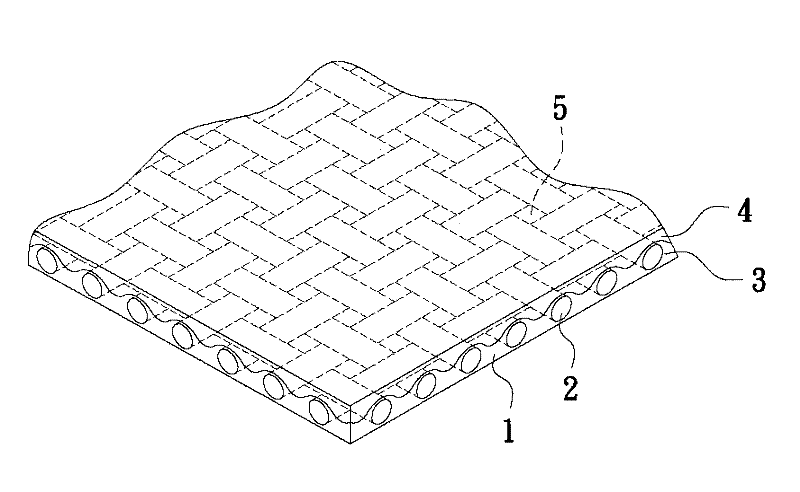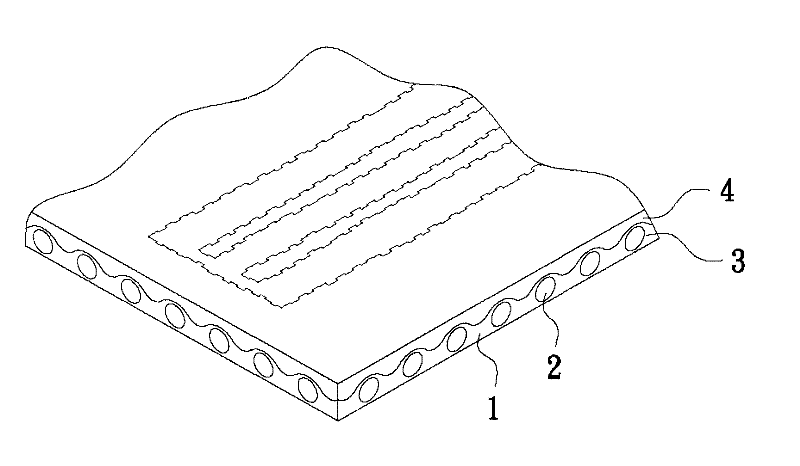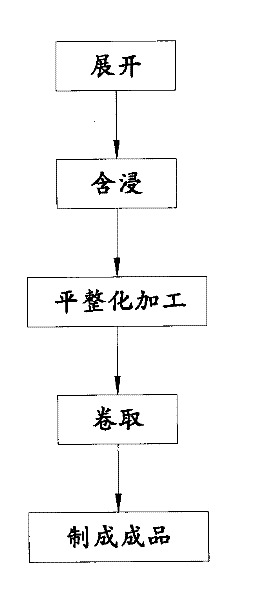Manufacturing method of non-woven glass fiber cloth
A glass fiber cloth, a technology for manufacturing method, applied in non-woven fabrics, fiber processing, textiles and papermaking, etc., can solve the problems of twisting and wrinkling, blurring, uneven thickness, etc.
- Summary
- Abstract
- Description
- Claims
- Application Information
AI Technical Summary
Problems solved by technology
Method used
Image
Examples
Embodiment Construction
[0023] Please also see image 3 , Figure 4 , Figure 5 as well as Image 6 Shown is a flow chart of a preferred embodiment of the present invention, a perspective view of a non-woven glass fiber cloth, an exploded view and a cross-sectional view of a fiber composite product, which discloses a manufacturing method of a non-woven glass fiber cloth, Contains the following manufacturing steps:
[0024] Fiber unfolding: After a fiber bundle, such as glass fiber bundle or carbon fiber bundle, is exported from a creel, it is flattened by means of rollers to form a fiber bundle 11 with a relatively low TEX number.
[0025] Resin impregnation: arrange multiple flattened fiber bundles 11 in the same direction, and pass through an impregnation tank containing a curing agent 12, wherein the curing agent 12 is made of resin and accelerator, etc., in a ratio of 100 to 1 Formed after mixing in proportion.
[0026] Material leveling process: the flattened fiber bundles 11 are drawn out ...
PUM
 Login to View More
Login to View More Abstract
Description
Claims
Application Information
 Login to View More
Login to View More - R&D
- Intellectual Property
- Life Sciences
- Materials
- Tech Scout
- Unparalleled Data Quality
- Higher Quality Content
- 60% Fewer Hallucinations
Browse by: Latest US Patents, China's latest patents, Technical Efficacy Thesaurus, Application Domain, Technology Topic, Popular Technical Reports.
© 2025 PatSnap. All rights reserved.Legal|Privacy policy|Modern Slavery Act Transparency Statement|Sitemap|About US| Contact US: help@patsnap.com



